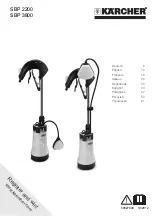
OM--05450
GHS SERIES
PAGE C--3
OPERATION
Strainer Check
If a strainer has been installed in the suction line,
monitor vacuum gauge readings to detect block-
age. Check the strainer if flow rate begins to drop.
Never introduce air or steam pressure
into the pump housing to remove a
blockage. This could result in personal
injury or damage to the equipment. If
backflushing is absolutely necessary,
limit liquid pressure input to 50% of the
maximum permissible operating pres-
sure shown in the pump performance
data.
Leakage
No leakage should be visible at pump mating sur-
faces or at pump connections or fittings. Keep all
line connections and fittings tight to maintain maxi-
mum efficiency.
If your pump is equipped with a packing seal, the
packing is lubricated by the liquid being pumped.
Some leakage around the packing seal is normal.
Packing pumps
must leak slightly
(2-3 drops per
minute) to cool and lubricate the shaft and to allow
the shaft to turn freely.
Wait until the pump has run long enough to reach
its normal operating temperature to adjust the
gland nuts. Adjust the nuts only tight enough to re-
duce excessive leakage.
PRESSURE RELIEF VALVE
ADJUSTMENT
Some pumps are not provided with a pressure re-
lief valve. A pressure relief valve must be installed
on the pump or in the discharge piping to ensure
safe operation. Otherwise, the pump may be dam-
aged and personnel injured.
If operating at high temperatures, allow the
pump to completely cool before attempt-
ing any adjustments.
Cracking Pressure
Cracking pressure is the pressure at which the
pressure relief valve first begins to open and by-
pass fluid. The nominal cracking pressure of the re-
lief valve provided with this pump is set at the facto-
ry and is indicated on the tag attached to the relief
valve.
If the nominal cracking pressure set at the factory
must be changed, see Table E-2 and instructions in
Section E - MAINTENANCE AND REPAIR
.
Complete By-pass Pressure
Complete by-pass pressure is the maximum pres-
sure the pump will see when all the pumped fluid is
being by-passed through the pressure relief valve.
This pressure will vary depending on the cracking
pressure setting, liquid viscosity, and pump speed
(pump capacity).
To determine the complete by-pass pressure, refer
to the pump performance chart or consult the fac-
tory.
Do not remove the adjusting screw jam
nut; with the jam nut removed the relief
valve spring(s) can be compressed too
far for the valve to open. If the valve
does not open, excessive pressure can
develop, causing damage to the pump
and possible injury to personnel.
















































